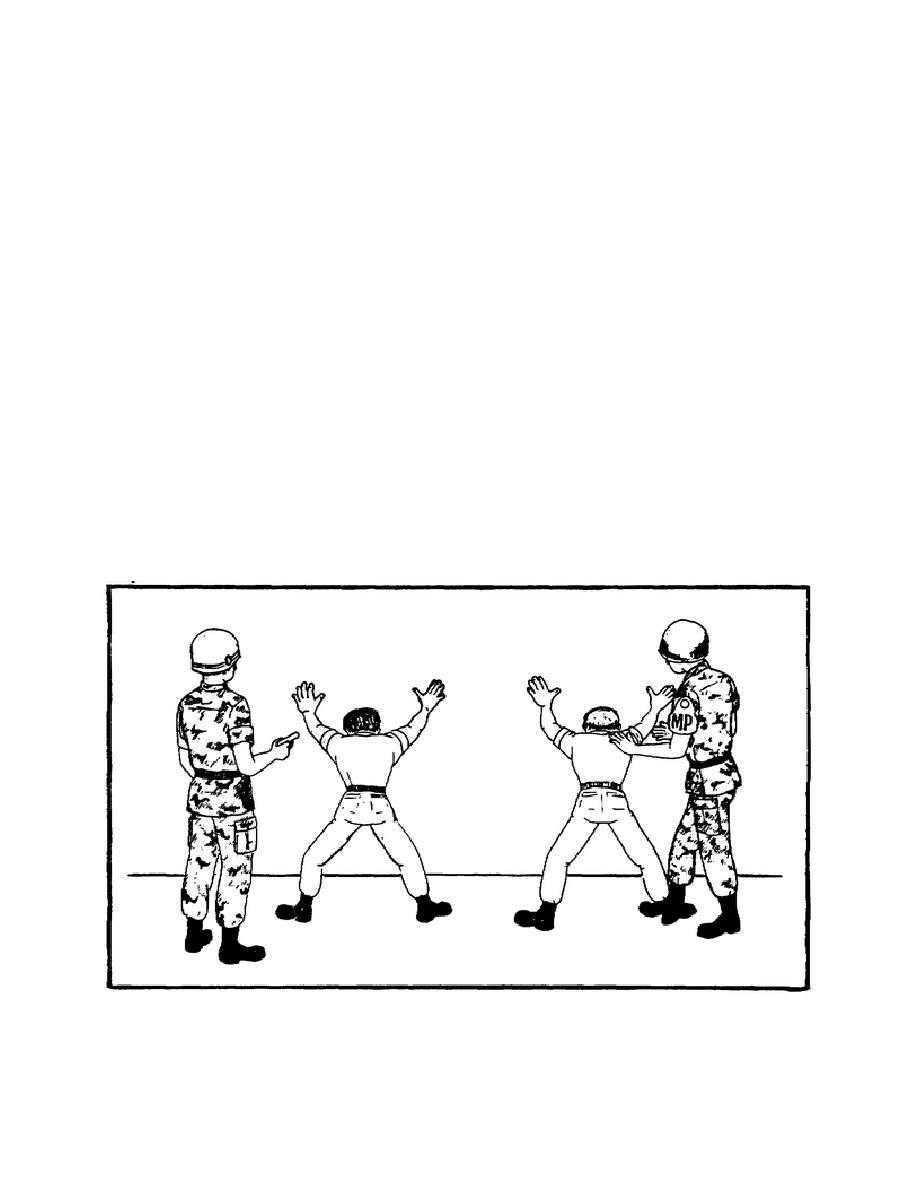
from the subject can be placed therein. Have him remove one hand from the wall
and place it behind his back. That way you can inspect his palm, fingers, and
hand. You can also inspect along the wrist, cuff, sleeve, and arm. He should
replace his hand on the wall when you have finished. The subject should remain
in the leaning position while his hand and arm are being searched. Check the
neck and collar of shirts and jackets. Remember to search only one half of the
subject at a time, the half closest to you. Continue the crushing procedure
down the entire one side of the subject. When finished, step back and have the
subject raise his foot so that the bottom of the shoe can be examined. When
finished with the one side, move around to the other side.
Remember not to
cross between the subject and the second investigator. Instead, go around so
that the line of fire is not crossed.
As you approach the other side, the
second investigator moves to the opposite side. During the changing of sides,
the subject does not move. He remains leaning against the wall. Again assume
a position next to the subject.
Reassume tight ankle-to-ankle contact and
continue searching.
f. At no time during the search should you bend over to search. Keep your
back as straight as possible.
When searching the lower extremities of the
subject, always assume a balanced crouch.
g. Upon completion of the search, hand irons should be applied when
required.
h. When more than one subject is to be searched, they should all assume a
leaning position against the wall.
They should be far enough apart so that
they cannot reach one another (see Figure 5-3). Using the
Figure 5-3.
Search of more than one Subject.
5-9
MP0100



 Previous Page
Previous Page
